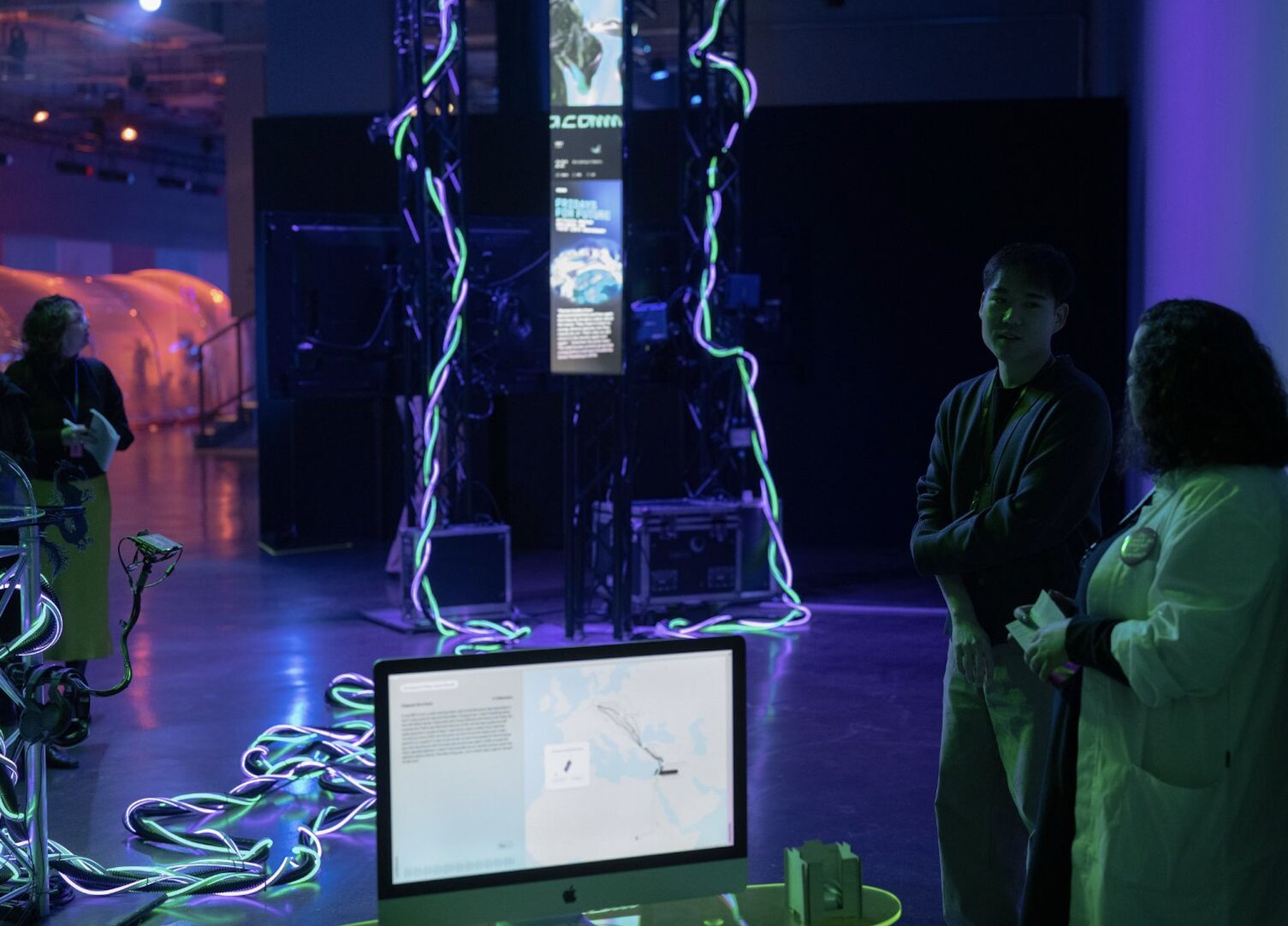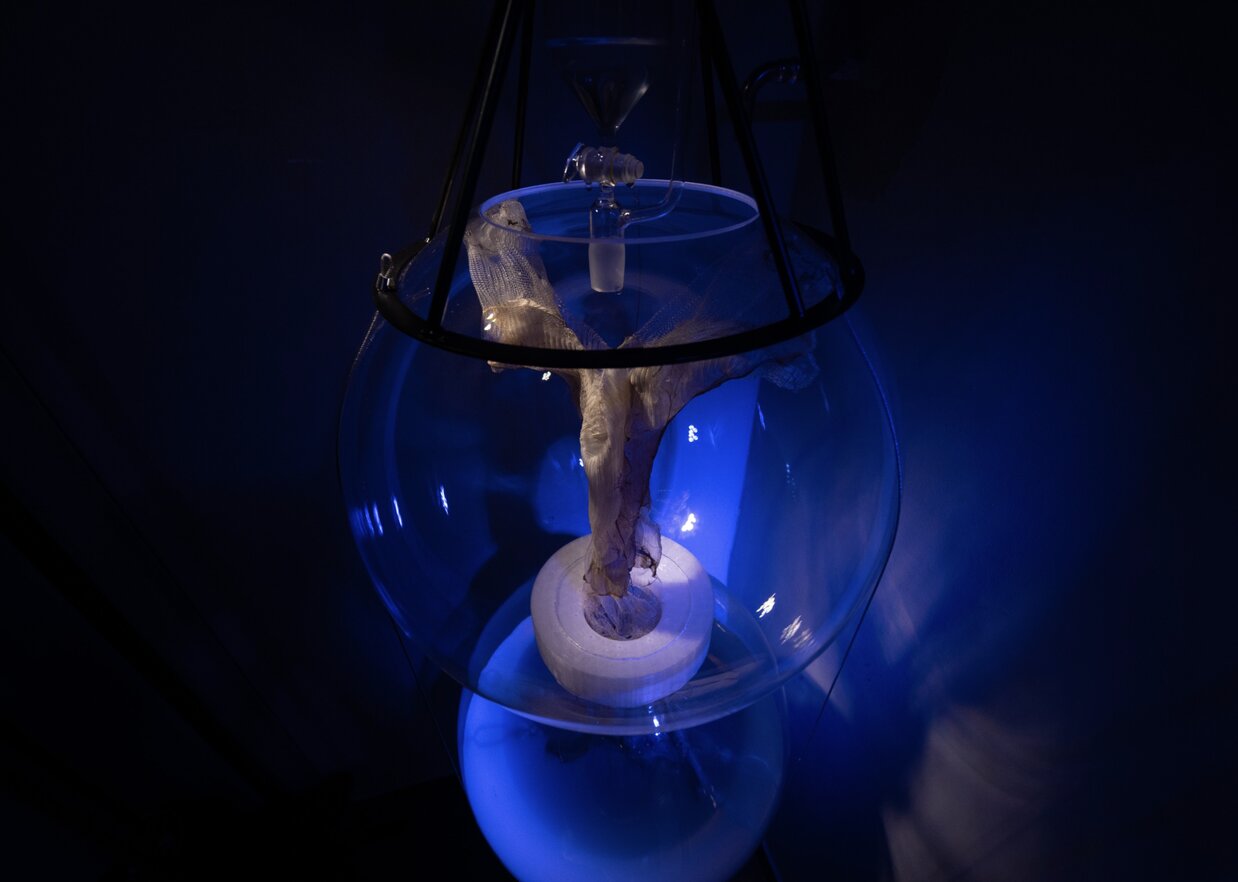Pioneering eco-social renewal through transdisciplinary innovation
Embracing the ethos of sustainability, eco-social renewal prompts us to reconsider our relationship with the natural world. It challenges us to adopt regenerative practices that prioritize the restoration and preservation of ecological balance, mitigating the damage caused by human activities

The publication “Driving the Human: Seven Prototypes for Eco-social Renewal” has been officially launched, marking the culmination of a remarkable three-year initiative. With great enthusiasm, the creators of this book invite readers to delve into a world where science, technology, and the arts converge in a transdisciplinary and collaborative approach, forging a path towards sustainable and collective futures.
Its pages document the significant milestones achieved throughout the three-year project, providing a comprehensive overview that contextualizes and expands upon its discourse. Expert voices and emerging creative visions intertwine, painting a vivid picture of the immense challenges and the transformative opportunities that lie ahead.

At the heart of this publication lie seven prototypes for eco-social renewal, each offering innovative ways to engage with one another and with the world that surrounds us. These prototypes push the boundaries of possibility, envisioning how artificial intelligence can be harnessed to mitigate the effects of climate change. They explore the transformative power of fiction, utilizing it as a tool to cultivate multispecies conviviality. Additionally, these prototypes create embodied connections, providing a deeper understanding of human impact on endangered territories.
To gain deeper insights into the book and the concepts encapsulated within it, we had the privilege of interviewing Vera Sacchetti. As a Basel-based design critic and curator, and the Program Coordinator of Driving the Human, Sacchetti offers a wealth of knowledge and expertise on the subject matter. Our conversation with her shed light on the intricacies of the publication and provided valuable perspectives on its underlying concepts.

What does eco-social renewal mean?
Vera Sacchetti:
“Eco-social renewal is a broad concept with multiple definitions: it centers sustainability, the planet and all its human and non-human inhabitants. For Driving the Human, it was important that we keep the concept of eco-social renewal open to a broad spectrum of interpretations, so that when we initially launched our open call at the start of the project, we could receive a wide variety of visions for eco-social renewal.
This allowed us to receive more than 1000 applications, and from those we proceeded to choose 21 initially, and then work until the end of the project with 7 of these ideas – which became our 7 prototypes.”

What is the book about and who is its target audience?
Vera Sacchetti:
“The book chronicles the three years of the evolution of Driving the Human. From the launch of our ideas festival in 2020, to the open call, and the many events that we hosted. At the center of the publication are the projects that made Driving the Human come to life – the 21 concepts that were initially chosen out of the open call, and the 7 prototypes that were developed as the core of the project.
These are contextualized by guest essays by luminaries such Brigitte Baptiste, Kim Albrecht, and Jan Boelen, and enriched by the voices of all those who made Driving the Human community thrive over the course of the the last three years. All those who are interested in art, technology, science and sustainability themes, as well as interdisciplinarity, form our target audience.”

If you were to summarize the research results into actionable points, what would they be and in what order of priority?
Vera Sacchetti:
“Over the course of the last three years, we’ve tried to steer away from solutions – as these further reinforce the planetary crisis of imagination that we are currently experiencing, which centers solutionism and binomes – and focus on exploring alternatives, visions and possibilities. Driving the Human does not seek to prescribe, but inspire.”
What were the most challenging aspects of the Driving the Human project? What were the initial assumptions regarding the outcomes achieved?
Vera Sacchetti:
“It is very rare that such a kind of research project gets support and time to be developed. Because of the aforementioned focus on solutions and efficiency, research projects do not usually allow for failure, larger timespans, or exploration for the sake of it. This is what makes this project special, and its methodology inspiring for others.
Additionally, our focus on trandisciplinarity and bringing different disciplines together to envision new alternatives has profoundly transformed all those who have taken part in the project. For me, personally, the daring attempt to change existing narratives about art, science, technology, and sustainability was the most challenging, but also the most inspiring part of the project.
These were tested as part of the several public events we hosted to communicate and engage with a larger audience; surprisingly for us, its majority was composed of young individuals, 18-30 years old. This tells us that our approach and structure can inspire a generation who is now coming of age.”

There are multiple ongoing changes that require the involvement of numerous individuals and effective coordination to ensure they are implemented correctly. From your perspective, who is responsible for making this possible?
Vera Sacchetti:
“The focus should not necessarily be on responsibility and solutionism, but rather on transdiciplinarity and creating bridges between disciplines so that they can work together in a fruitful way. This can allow for new visions and approaches when dealing with the complex, multilayered issues that comprise our contemporary moment.”
Often, visualizations of a future world are difficult for ordinary people to grasp as they are preoccupied with their everyday lives. What do you think is the best way to engage them in this process of adaptation?
Vera Sacchetti:
“A fruitful approach seems to be the immersive environments that we have tested as part of our public events. These aimed to be exercises in changing the narrative, and materialized in a multiplicity of formats, from concerts to performances, tours with invited experts, workshops for all ages, immersive installations and performative readings.
The fact is, we do not know where we will meet our audience, and therefore it is important to create many different entry points into these complex issues. We believe this has been a very fruitful approach, that helped to engage and inspire many.”

From an ethical and anthropological standpoint, do the seven prototypes presented highlight any critical issues in the way we currently live? If so, what are they and how can they be addressed?
Vera Sacchetti:
“All of the seven highlight different issues, but more importantly, they highlight an alternative and a propositional future for these issues. From the Human-Bacteria Interfaces, a project that explores bacteria that can communicate with humans and help build future dwelling spaces – a theme that is ethically controversial at this moment – to the Virtual Sanctuary for Fertilizing Mourning, which highlights the murders of indigenous leaders in the Peruvian Amazon, documenting their communities and their ways of life and thinking about mourning as fertile practice, their diversity is incredible and their proposed approaches are manyfold.”

From your perspective, what do you think we will have to give up in the coming years to make room for these new models of life, which are based on innovations on one hand and the need to preserve the Earth on the other?
Vera Sacchetti:
“One of the themes that seemed to arise frequently during the work we developed over the course of the last three years was the idea of decentering the human as an important priority. The willingness to collaborate, in a transdisciplinary way, is also something important, creating bridges between different disciplines and backgrounds. Ultimately, we also understood the benefits of not focusing on a solutionist approach, and of being willing to work as part of a larger, planetary ecosystem.
As Deborah Danowski and Eduardo Viveiros de Castro have demonstrated in The Ends of the World, it is only in a Western-centric mindset that the world is ending. There are many others for whom the world has already ended, or keeps ending, continuously. This allows us to understand the possibility of multiple worlds, and to work towards their making.”






